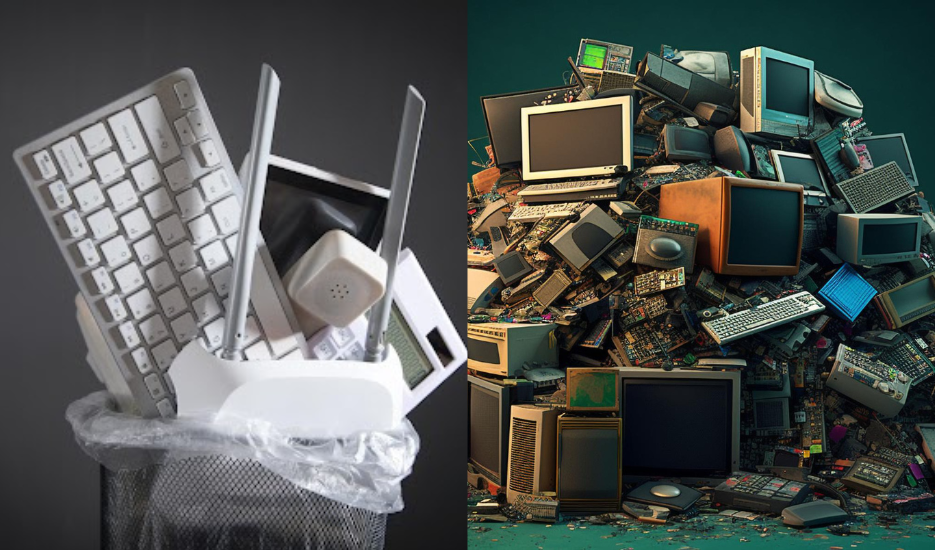It asset recycling is no longer a mere logistical chore confined to the backrooms of corporations. It is, rather, a meditation on cycles of use, obsolescence, and renewal. In an age defined by relentless technological change, the fate of our discarded laptops, servers, and smartphones becomes not just a question of waste management but of ethics, environment, and economy. The story of technology does not end at purchase; it lingers, unresolved, in the way we choose to recycle it.
The Hidden Afterlife of Technology
Every electronic device carries within it two parallel histories. One is the visible arc: design, manufacturing, distribution, and daily use. The other is silent and often neglected: what happens after it is set aside, deemed too old, too slow, or too incompatible.
Discarded IT assets, when not responsibly recycled, accumulate in landfills. They release heavy metals into soil and water, choke recycling plants with plastics, and contribute to the swelling tide of e-waste worldwide. Yet within the casing of each device lies an alchemy of recoverable materials, gold, copper, aluminium, and rare earths, that if reclaimed, could be reborn into new circuits and fresh architectures. This cycle, both invisible and profound, reminds us that no device is truly without value.
Why IT Asset Recycling is More Than Disposal
To recycle an asset is not merely to discard it responsibly, but to participate in a cycle of restoration. Done well, IT Asset Recycling performs three quiet miracles:
-
Environmental preservation: Reducing landfill dependency, limiting toxic leaching, and cutting carbon emissions from mining.
-
Economic return: Recovering raw materials and extending the lifecycle of usable equipment through refurbishment.
-
Data security: Ensuring sensitive corporate and personal information is erased before devices re-enter circulation.
As one sustainability report from Singapore put it, “Recycling IT assets is not about the end of use, but about preparing technology for its next chapter in a safer, more sustainable world.”
The Singapore Perspective
Singapore, a city that thrives on efficiency and limited space, offers a compelling mirror for the world’s challenge with e-waste. Its emphasis on closed-loop systems and responsible disposal is instructive. Programmes in the city-state highlight the principle that asset recycling is both ecological and cultural, a recognition that waste, too, must be carefully curated.
Singapore’s focus on meticulous recycling processes underscores three lessons:
-
Discipline in process ensures hazardous materials are neutralised.
-
Transparency in reporting assures organisations that data security is non-negotiable.
-
Innovation in reuse gives older equipment a renewed purpose in schools, charities, and smaller businesses.
Corporate Responsibility and the Ethical Turn
Modern corporations are being called not just to innovate but to reckon with the environmental cost of their innovations. IT departments are therefore urged to include recycling within procurement cycles, not as an afterthought but as an intrinsic part of their digital strategy.
The choice to recycle becomes a moral act: a refusal to burden the planet with the detritus of progress. Just as importantly, it signals to employees, investors, and consumers that sustainability is not an abstract value but a daily practice. Corporate leadership must realise that sustainable action is no longer a peripheral ambition but a competitive necessity in global markets.
Practical Pathways for Organisations
How, then, should an organisation embed it asset recycling into its culture? The journey need not be onerous. It begins with intention and unfolds through careful planning:
-
Audit IT assets regularly: Identify equipment approaching obsolescence before it becomes a burden.
-
Adopt secure data erasure protocols: Protect corporate and client data through certified destruction methods.
-
Partner with responsible recyclers: Work with certified firms that adhere to both environmental and data standards.
-
Educate staff: Build awareness that recycling is not a peripheral chore but part of the organisation’s ethical identity.
Such steps transform recycling into an institution rather than an occasional task.
The Human Dimension
To speak of recycling is, ultimately, to speak of continuity. The metals we recover, the devices we refurbish, the waste we avoid, all are fragments of a larger narrative that connects our use of technology with the fate of the earth itself.
Each discarded laptop, each server retired from its rack, becomes an artefact of our civilisation’s hunger for progress. To recycle is to admit that progress need not be wasteful. It is to recognise that within what we cast away lies the potential for renewal. In this recognition, we are reminded that the smallest gestures, a single phone recycled, a hard drive securely erased, accumulate into a collective legacy of responsibility.
Conclusion
There is a quiet dignity in giving old machines a new lease of life. Just as in biology, where cells renew themselves to sustain the body, so too must our technologies find renewal to sustain our societies. To embrace It asset recycling is not merely to obey regulation or seek convenience. It is to acknowledge our responsibility to the planet, to our economies, and to each other. And in this acknowledgement lies the possibility of transformation, proof that endings can, indeed, become beginnings. The story of technology, like the story of life, continues through cycles, and one of its most important cycles is it asset recycling.
